Recent viewing, Summer 2018 – Weird Stuff
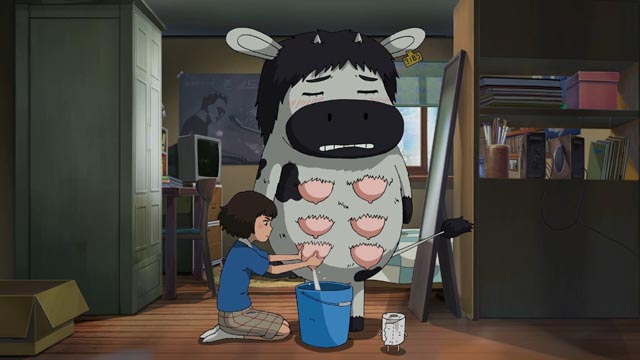
A story doesn’t have to make sense for me to enjoy it. There are numerous ways to watch a movie, and satisfaction isn’t always predicated on narrative logic. In fact, sheer invention, however seemingly crazy, can be enough. I love that Japanese horror and fantasy seldom bothers to rationalize the supernatural elements of a story; the existence of spirits is a given, and the appearance of a stable, physical world an illusion. This is why American remakes of Japanese films often fail for me – the western mind tends towards seeking a rational explanation and movies like Gore Verbinski’s The Ring (2002) become leaden as they pile on backstory to explain the ghost.
For me, as long as there’s some degree of internal narrative consistency, it doesn’t matter whether or not it aligns with our experience of the real world. This is about storytelling, which is an art dating back to the origins of language and sitting around a fire telling tales to stave off a fear of the darkness.
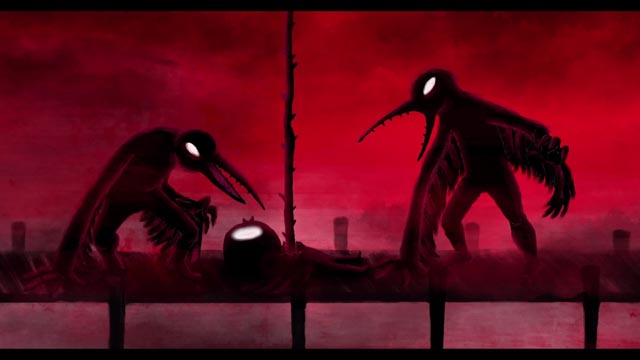
I have a friend who’s a stickler for rational narrative. Get him started and he’ll go on at length about how Peter Jackson’s masterpiece, Heavenly Creatures (1994), is one of the worst films ever made. His reason: the fantasy world created by the two girls is totally misconceived by Jackson. Although they construct its physical form with clay and sand, in their imaginations they would see it as completely real, not as animated clay and sand. This is not how a child’s imagination works, my friend insists, and therefore the movie itself is rubbish. The first time I heard this argument I was completely baffled. It seemed such a rigid and limiting point of view. As a child, I had played with toys … but as far as I can remember, even as I created scenarios and adventures, I was never not aware that I was playing with toys. The process involved a kind of double vision – the physical actuality of the toys alongside the imaginative story I was telling myself. Wasn’t Jackson simply visualizing this process in Heavenly Creatures?
But of course, even in the real world, strict rationality is partly an illusion. For instance, this friend who hates what he sees as inconsistency, has a passion of cheap B horror movies, to which in no way can he apply the standard which makes him rail against Heavenly Creatures. He was the one who got me to seek out and watch Roy Del Ruth’s The Alligator People (1959) a few years back. He rated it much better than its reputation, despite the climactic absurdity of the monster suit when it finally appears.
For me then, what matters is the moment-to-moment pleasure a filmmaker’s imagination can give me, and sometimes that arises from unexpected flights of imagination … a feeling of how the hell did they think of that? I’ve seen a few films lately which worked this way for me, regardless of whatever flaws might be nit-picked by someone looking for coherence and consistency.
*
Two animated features
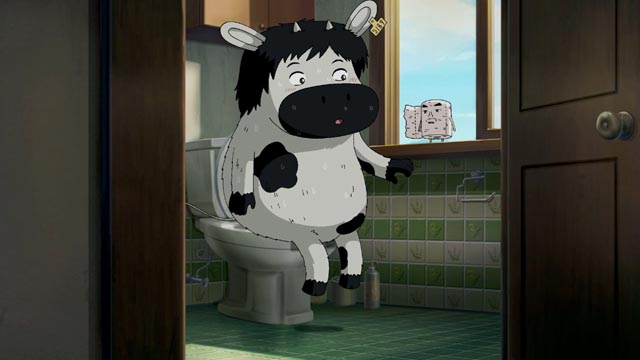
Of course, it’s a given that animation lends itself to flights of fancy only tenuously connected with reality, so it may be inappropriate to include them in this context. But a pair of films I watched recently had that feeling of unfettered invention which, at least in one case, pushed the limits into the realm of exhilarating absurdity. This was Chang Hyung-yun’s Satellite Girl and Milk Cow (2014), a Korean feature which begins with an absurd concept and follows it in highly inventive directions, full of humour and, unexpectedly, some genuine emotional engagement.
An obsolete satellite orbiting Earth picks up a signal and hears a voice singing a melancholy song. Attracted by the sound, the satellite pulls itself out of orbit and falls to the ground. Somehow, she emerges from the crater as a girl. Meanwhile nearby, a menacing walking furnace chases a plump cow through woods, intent on tossing the animal into its fiery gut. The furnace is briefly defeated by the appearance of Merlin the Magician – who happens to be a talking roll of toilet paper wearing a floppy hat and cape. (He explains at one point that he had fallen asleep in a tree which was cut down and sent to a paper mill.)
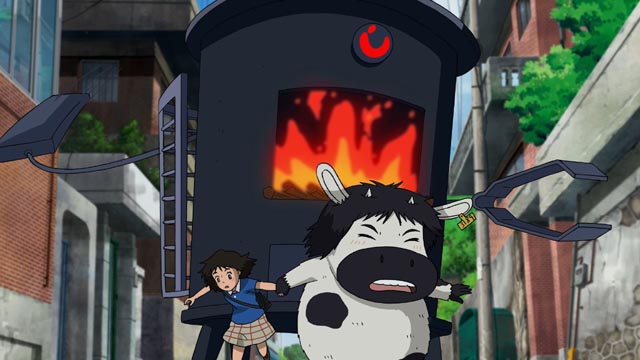
The cow turns out to be the unsuccessful singer heard by the satellite, victim of a second menace who is turning people into animals and stealing their organs for the black market. The girl and the cow and Merlin live together in the singer’s apartment while they work to defeat the organ thief and the walking furnace. Does any of this make any sense? No, but the story is told with wit and style – there’s even a bit when the guy-turned-cow is milked by the satellite-turned-girl which may well bend a few young minds.
Although Korean studios do enormous volumes of animation for U.S. series, I don’t think I’ve seen a home-grown feature before. Satellite Girl and Milk Cow is a great introduction to an unfamiliar branch of the genre, related to anime, but somehow crazier and sweeter.
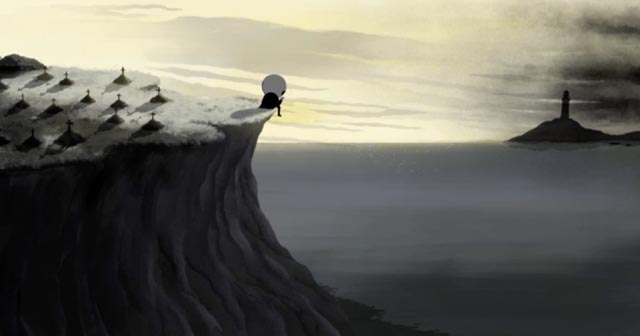
In its own way Pedro Rivero and Alberto Vázquez’ Birdboy: The Forgotten Children (2015) is also crazy, though not as sweet. This Spanish feature, based on a graphic novel by co-director Rivera, is much darker and more disturbingly violent. Talking animals have been a mainstay of animation since the art’s earliest days, but there’s no whimsy here.
On an island which has suffered some catastrophe – nature subsumed to industry, buried under mountains of garbage, and apparently flattened when the factory explodes with a nuclear blast – a variety of animals struggle to survive. Vicious rats scavenge the garbage dumps, tearing each other apart in their competition for copper, which they sell for food. Dinky is a mouse, failing at school and desperate to leave the island. She lives with an oppressive adopted family, and skips classes to hang with her friends: Sandra, a rabbit given to violent rages prompted by small demons that hang around her, and Little Fox. They’re trying to scrounge enough money to pay their passage off the island, not above stealing from others.
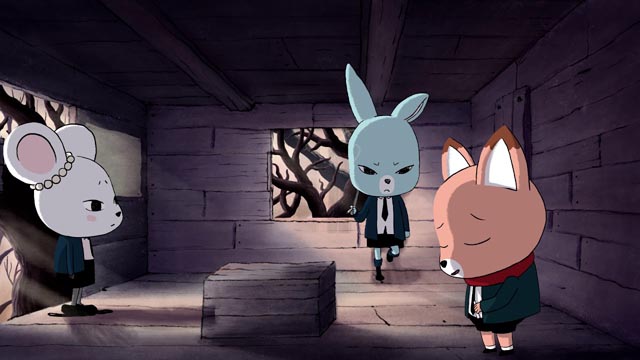
There’s a young pig who has a fishing boat, useless now that all the fish have died, who may take them for a price. In the meantime, he smuggles drugs and tries to deal with his invalid mother who is possessed by a monstrous, deadly spider. There are a pair of dog-policemen who patrol the island with their rifles, killing birds because they may also be smuggling drugs. But their main target is Birdboy, son of the former lighthouse-keeper Birdman, who was killed by the dogs because they suspected him of smuggling drugs too … but he was actually carrying golden, glowing acorns from a tree hidden in a secret part of the island. There is a suggestion that these seeds may be capable of regenerating life on the devastated island, and also that this is the place to which the spirits of those who die go.
Although Dinky seems to love Birdboy, he remains alone. A powerful demon lives inside him and he uses drugs to escape an unbearable existence. These disparate characters connect only tangentially, their hopes and plans continuously thwarted; the ecological catastrophe has destroyed all sense of community and shared interests.
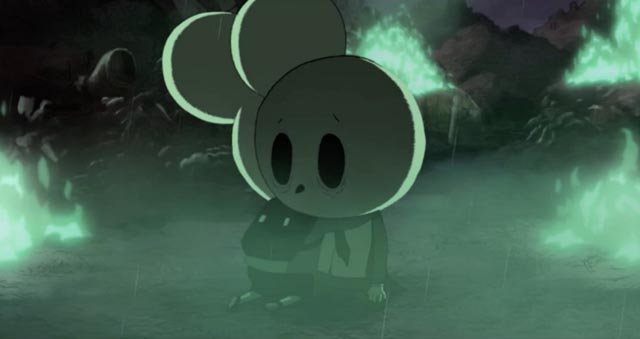
Birdboy creates tension from the disparity between the cute critter characters and the relentless darkness of the events they’re involved in. An air of hopelessness and death hangs over these small animals and there seems little chance that they’ll ever actually be able to escape to a better place.
Cel animation still seems to promote more individuality than CG, and one of the great satisfactions of both these films is their quirky hand-crafted (but very different) styles.
*
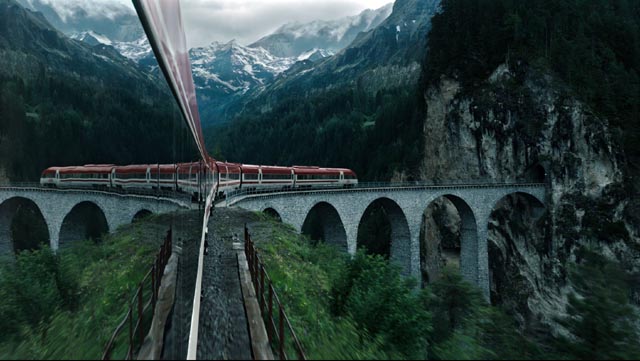
A Cure for Wellness (Gore Verbinski, 2016)
CG is now a ubiquitous tool in live action filmmaking as well, both as a short-cut to get around budget limitations (more common than many viewers may realize as the whole point is not to notice that a naturalistic shot is actually an effect) and as a way of realizing fantastic story elements. There’s a lot of CG of both kinds, for instance, in Gore Verbinski’s A Cure for Wellness (2016), allowing the director to indulge his predilection for visual excess.
I’m not much of a fan of Verbinski’s work; even more than Robert Zemeckis he likes to overdo everything. It has to be bigger, louder, more frantic – like the Pirates of the Caribbean movies which became increasingly bloated and more inane as each one appeared. His movies try so hard to pack stuff in that they become exhausting. And yet I have to admit that for the most part I quite enjoyed A Cure for Wellness, a big, elaborate Gothic horror almost disguised by too much technical polish. It’s a very slick film, although it might have benefited from a little more grit, and it runs too long (almost two-and-a-half hours), becoming slack and rambling when it should be tightening its narrative noose.
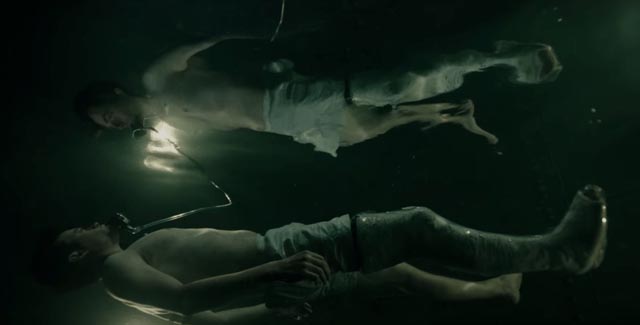
Despite the high-tech polish, the movie evokes classic Hammer in its opening act. Ambitious young sales exec Lockhart (Dane DeHaan), facing investigation for some shady deals, is sent by the company Board to retrieve CEO Pembroke (Harry Groener) from a high-end sanatorium in the Swiss Alps; his mission is urgent because the company is facing investigation ahead of a major merger and there are discrepancies which have to be ironed out and only Pembroke has the authority to sign the necessary documents. On the way from the station, Lockhart’s ride takes him through a town where the locals are hostile and suspicious of the castle perched above. It’s a classic Dracula moment, immediately raising uneasy suspicions which are increased when he arrives and sees the patients engaged in various activities in a courtyard while staff are deliberately obstructive. He isn’t allowed to see Pembroke because outside influences might adversely affect his “treatment”.
Heading back down to the village to find a phone, Lockhart is caught in a car crash when a deer crosses the road; he wakes up three days later, his leg in a cast, an unwilling patient in the sanatorium, under the care of Dr. Volmer (Jason Isaacs). Surrounded by creepily smiling old people who seem to have no interest in leaving the place, Lockhart searches for Pembroke – who turns out to have lost all interest in business – and is attracted to an ethereal young woman, Volmer’s “special patient” Hannah (Mia Goth). He also learns something of the history of the place from fellow patient Victoria Watkins (Celia Imrie): two hundred years earlier the Baron who ruled the area was involved in sinister experiments which resulted in dead, shriveled bodies turning up in the neighbourhood. Seeking a pure blood line, he married his own sister and, on their wedding night, the local peasants attacked, killing the sister-wife and burning the castle down. The place as it now is was rebuilt over the ruins.
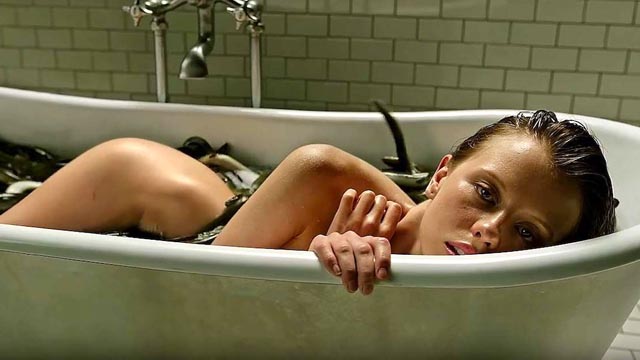
The cure involves endlessly drinking water from the lake beneath the castle … this at first seems nothing more than a health-spa obsession, but at one point Lockhart finds a small squirming worm in his glass. Later, sealed into a huge sensory deprivation tank as part of his own “cure”, he finds himself surrounded by swarms of eels, In his panic he drowns, but is rescued at the final moment by staff. The tank, needless to say, has no eels in it.
The mixture of solicitation and suspicion which makes Lockhart feel like a prisoner begins to raise the idea that this is heading in the unsatisfactory direction of Shutter Island (2010) … maybe Lockhart really is sick and deranged and maybe Dr. Volmer really is working to find a cure for his psychological illness. (Lockhart is haunted by his childhood memory of seeing his father commit suicide, an event which has made him hard and totally self-centred.) It’s during the meandering mid-section that this seems all too possible … but in the final act, Justin Haythe’s script plunges right back into Gothic horror and while not entirely coherent, it is satisfyingly creepy and perverted – immortality and incest are classic Gothic themes; the eels, however, are an idiosyncratic and decidedly perverse invention.
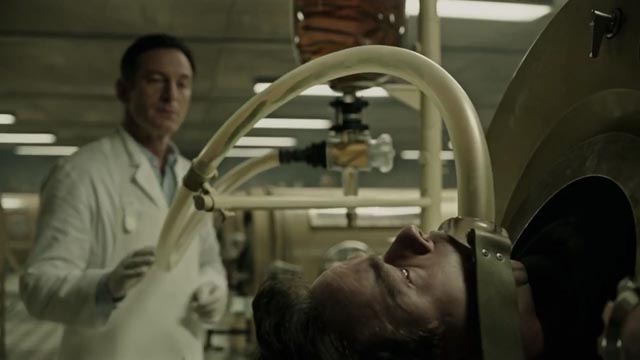
It turns out that the eels living in the underground lake live for hundreds of years and Volmer has found a way to distill their essence (in a particularly squirmy way) and bestow prolonged life on himself and others – hence his patients’ lack of a desire to leave the sanatorium. In fact, it turns out Volmer is none other than the Baron himself, hideously scarred by the fire and hiding behind a fleshy mask, and Hannah is his daughter, torn from his sister’s womb by the peasants and tossed into the water with the eels. Her life prolonged and her development slowed, Volmer has been waiting two hundred years for her to mature – a process finally completed by her encounter with Lockhart and the feelings he awakens in her.
With a kind of Phantom of the Opera climax in the underground caves, A Cure for Wellness returns at last to old-school horror, banishing memories of disappointing “rational” explanations which ruin movies like Shutter Island and Jacob’s Ladder (1990). In the end, it follows through with its wacky (and ultimately perverse) idea, making it the most satisfying movie of Verbinski’s career.
Comments
Likely you suggested we see Heavenly Creatures when it first came out at the Winnipeg Film Group’s Cinematheque in 1994.
Directed by a generally unknown Peter Jackson it starred teenager Kate Winslet.
I was transfixed. One of the best movie experiences ever. I still have a battered poster on my wall.
How sad what’s happened to Christchurch, formerly our favorite New Zealand city.